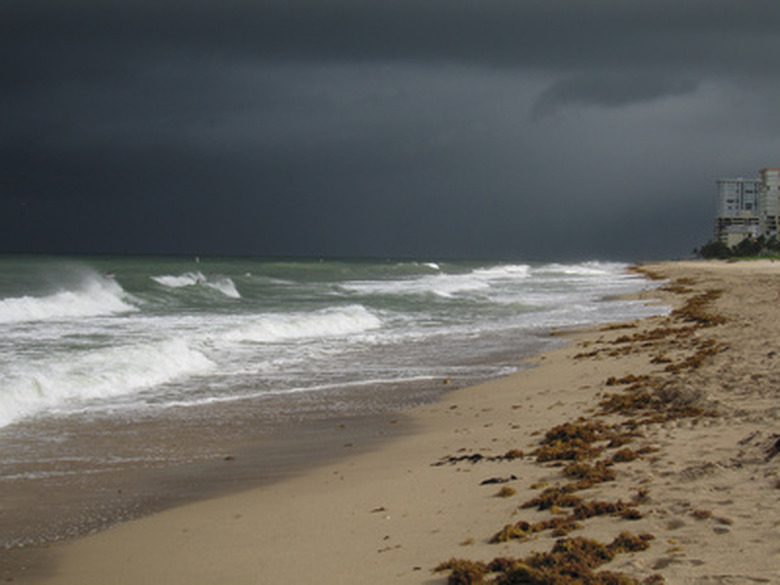Definition Of The Eye Wall Of A Hurricane
Hurricanes are spiral-shaped storms that form around an empty area, called the eye of the storm. For a storm to be considered a hurricane, the winds inside the storm must produce speeds of at least 74 miles per hour. These storms are most common along the East Coast of the U.S. because of the warm ocean waters that feed hurricanes, giving them their strength.
Eye Wall
Eye Wall
The eye wall of a hurricane surrounds the eye of the hurricane with a wall of clouds that is considered the most deadly area of a hurricane. The eye wall removes any trace of a storm from the hurricane's eye and produces deadly winds more than 150 mph.
The Eye
The Eye
The eye of a hurricane is the center of the storm as well as the calmest part of the storm. When you see a photo of a hurricane, the eye is the empty hole in the middle of the storm that the bands of the hurricane surround. The eye is calm and almost serene, and is where the weather service flies its planes into to determine the ferocity of the storm.
Effects
Effects
The winds and storm clouds that the eye wall removes from the eye of the storm become spiraling winds that force warm air into the rest of the storm, creating the energy source for the entire hurricane. This warm air is what creates the strong winds and driving rain that hurricanes produce.
Spiral Bands
Spiral Bands
Hurricanes have spiral bands that surround the eye wall of the storm. These bands are what produce the vast majority of the wind and rain that hurricanes produce and are the largest part of the storm.
Facts
Facts
Hurricane season in the Atlantic begins June 1 and ends Nov. 30. Hurricanes in this region form off the coast of Africa and become dangerous in the warm waters of the Atlantic, Caribbean and Gulf of Mexico. These storms threaten Caribbean Islands, Mexico the U.S. Gulf Coast the Eastern seaboard of the U.S. The Eastern Pacific hurricane season begins May 15 and lasts until Nov. 30. Eastern Pacific hurricanes are less threatening to the U.S. because of the cooler water temperatures in the Pacific Ocean. By the time most storms reach the West Coast they have been downgraded because the water is not warm enough to sustain the storms.
Cite This Article
MLA
Raiford, Tiffany. "Definition Of The Eye Wall Of A Hurricane" sciencing.com, https://www.sciencing.com/definition-eye-wall-hurricane-6504125/. 22 November 2019.
APA
Raiford, Tiffany. (2019, November 22). Definition Of The Eye Wall Of A Hurricane. sciencing.com. Retrieved from https://www.sciencing.com/definition-eye-wall-hurricane-6504125/
Chicago
Raiford, Tiffany. Definition Of The Eye Wall Of A Hurricane last modified March 24, 2022. https://www.sciencing.com/definition-eye-wall-hurricane-6504125/
